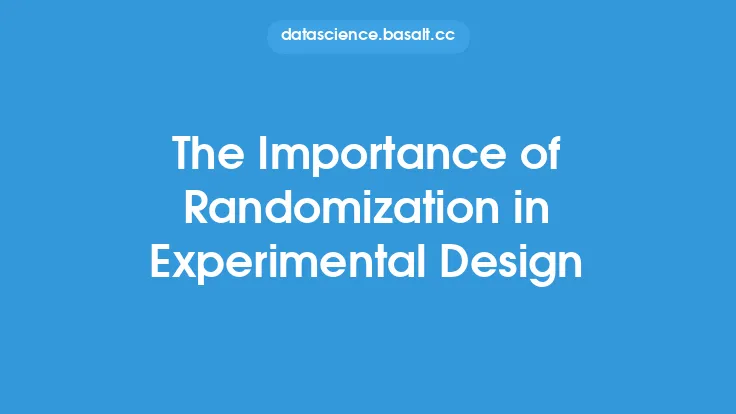Experimental design is a crucial aspect of research in various fields, including psychology, medicine, and social sciences. It involves planning and structuring experiments to test hypotheses and answer research questions. One key aspect of experimental design is the type of design used, which can significantly impact the validity and reliability of the results. In this article, we will delve into two fundamental types of experimental designs: between-subjects and within-subjects designs.
Introduction to Between-Subjects Designs
Between-subjects designs, also known as independent samples designs, involve comparing two or more groups of participants who are exposed to different levels of an independent variable. Each participant is assigned to only one group, and the groups are compared to determine if there are significant differences between them. This design is commonly used in experiments where the researcher wants to compare the effects of different treatments or conditions on a dependent variable. For example, a researcher might use a between-subjects design to compare the effects of two different medications on blood pressure.
Introduction to Within-Subjects Designs
Within-subjects designs, also known as repeated measures designs, involve measuring the same participants under different conditions or at different times. Each participant serves as their own control, and the researcher compares the results within each participant to determine if there are significant changes or differences. This design is commonly used in experiments where the researcher wants to examine the effects of a treatment or condition over time or to compare the effects of different treatments on the same participants. For example, a researcher might use a within-subjects design to examine the effects of a new exercise program on weight loss over a period of several weeks.
Key Differences Between Between-Subjects and Within-Subjects Designs
The primary difference between between-subjects and within-subjects designs is the way participants are assigned to groups and the type of comparisons made. In between-subjects designs, participants are assigned to different groups, and the groups are compared to determine if there are significant differences between them. In within-subjects designs, the same participants are measured under different conditions, and the results are compared within each participant to determine if there are significant changes or differences. Another key difference is the level of control over extraneous variables. Within-subjects designs provide more control over extraneous variables, as each participant serves as their own control. Between-subjects designs, on the other hand, require more careful control over extraneous variables, as the groups may differ in ways that affect the results.
Advantages and Disadvantages of Between-Subjects Designs
Between-subjects designs have several advantages, including the ability to compare different groups and the ease of recruitment and data collection. However, they also have some disadvantages, such as the potential for confounding variables and the need for large sample sizes to achieve adequate power. Additionally, between-subjects designs can be more time-consuming and expensive, as they require recruiting and testing multiple groups of participants.
Advantages and Disadvantages of Within-Subjects Designs
Within-subjects designs have several advantages, including increased control over extraneous variables and the ability to examine changes over time. They also require smaller sample sizes, as each participant serves as their own control. However, within-subjects designs also have some disadvantages, such as the potential for carryover effects and the need for careful control over the order of conditions. Additionally, within-subjects designs can be more complex and difficult to analyze, as they require accounting for the correlations between repeated measures.
Statistical Analysis of Between-Subjects and Within-Subjects Designs
The statistical analysis of between-subjects and within-subjects designs differs significantly. Between-subjects designs typically involve comparing the means of different groups using t-tests or analysis of variance (ANOVA). Within-subjects designs, on the other hand, involve comparing the means of repeated measures using repeated measures ANOVA or other specialized statistical techniques. The choice of statistical analysis depends on the research question, the design, and the level of measurement of the dependent variable.
Applications of Between-Subjects and Within-Subjects Designs
Both between-subjects and within-subjects designs have a wide range of applications in various fields, including psychology, medicine, and social sciences. Between-subjects designs are commonly used in clinical trials, where the goal is to compare the effects of different treatments on a dependent variable. Within-subjects designs are commonly used in studies examining the effects of a treatment or condition over time, such as in longitudinal studies or studies examining the effects of a new exercise program on weight loss.
Conclusion
In conclusion, between-subjects and within-subjects designs are two fundamental types of experimental designs that are widely used in research. Each design has its advantages and disadvantages, and the choice of design depends on the research question, the level of control over extraneous variables, and the type of comparisons to be made. Understanding the differences between these designs and their applications is essential for designing and conducting experiments that produce valid and reliable results. By carefully considering the design and statistical analysis, researchers can increase the validity and reliability of their results and contribute to the advancement of knowledge in their field.





